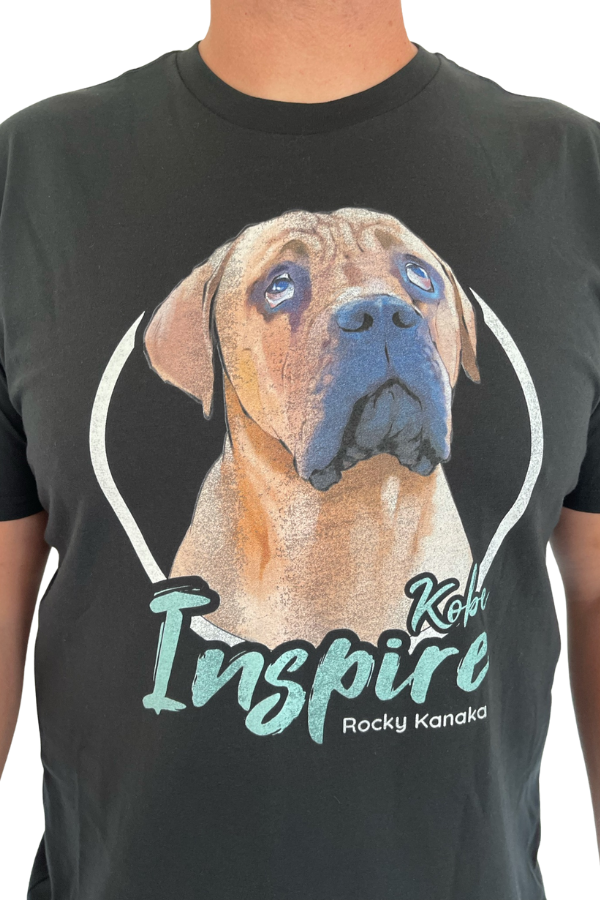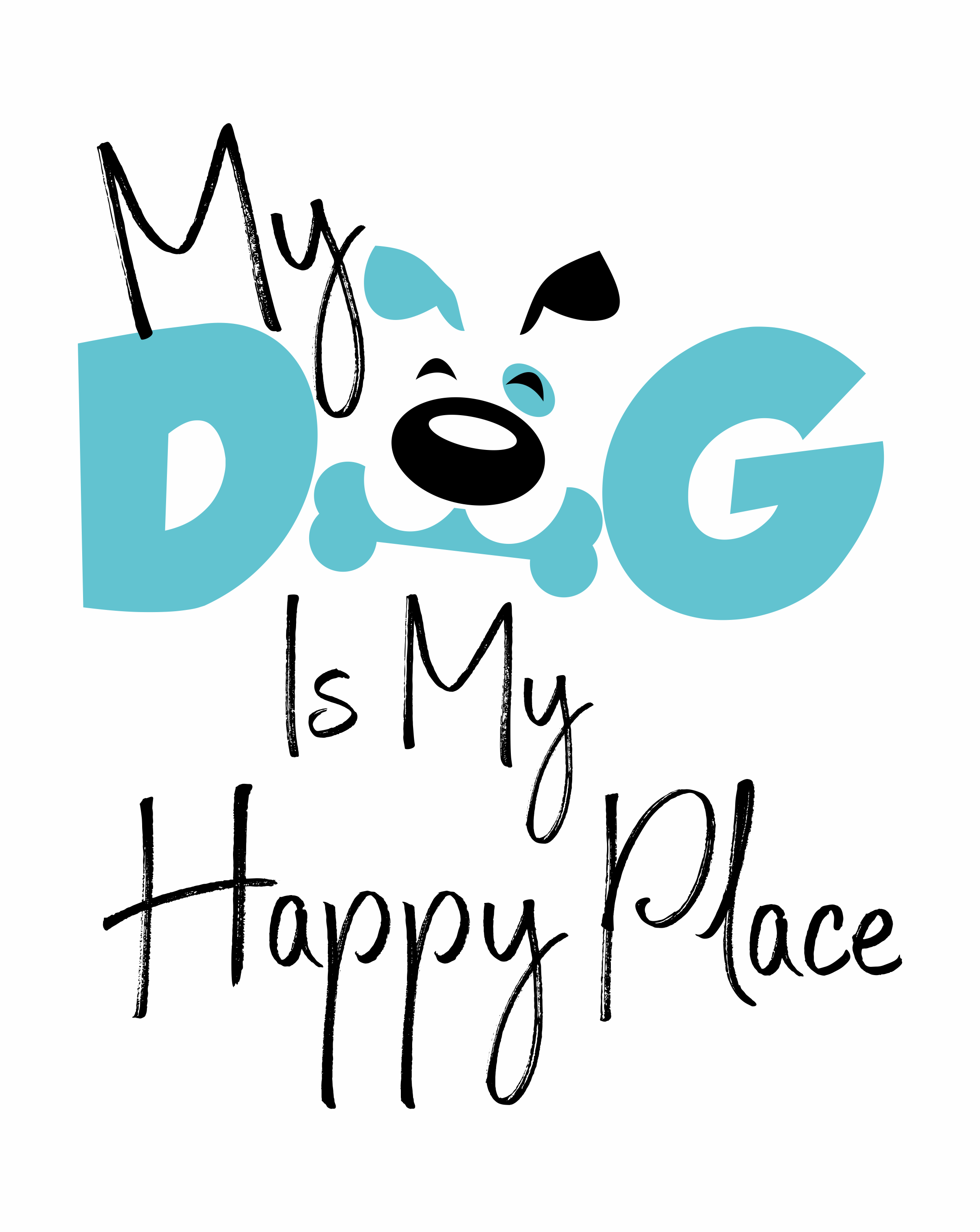Foster & Adopt News & Entertainment
These Heroes Are Saving Dogs From High-Kill Shelters, One Trip at a Time
What do shelters do when they can’t take any more animals? Anyone working in animal rescue will tell you that dealing with overpopulation is one of the most heartbreaking parts of the job. In many cases, shelters are forced to euthanize dozens, and sometimes hundreds of dogs a month to make room for the enormous influx of new strays and owner surrenders. Shelters around the country are inundated with new animals every day, and there are simply not enough resources to care for all of them.
Thankfully, this is where animal transporters come in.
Animal transport companies work closely with local shelters and animal rescues around the country to bring adoptable dogs—and other pets—to foster homes, short-term shelters, and forever homes!
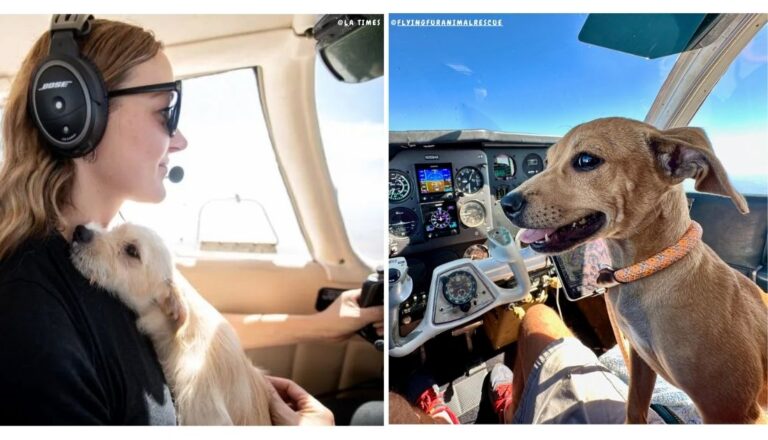
Petra Janney—co-founder of Amelia Air, which we will cover more later—is one of hundreds of volunteer transporters nationwide. In an August 30, 2023 interview with the Los Angeles Times, Janney shared that in the few short years since co-founding Amelia Air, the team has saved more than 1,300 animals—mostly dogs.
The job is simple in practice but time-consuming and expensive—dependent on the generosity of volunteers. Pick up dogs from overpopulated shelters, transport them to a new city or state, and drop them off safely with a foster or their forever family. Petra Janney is a pilot and flies a 1973 Piper Cherokee which has enough space for a little more than a dozen dogs, but other volunteer animal transporters also drive cars, trucks, and buses to bring dogs to freedom.
Where Do Volunteer Transporters Get Dogs To Transport?
Most volunteer animal transport companies work with specific shelters to provide an alternative solution for overcrowding. Rather than being put to sleep, the dogs rescued by transporters are brought either to a rescue with greater capacity, or directly to fosters and adoptive families. This process has to happen quickly, and transporters and their partners need to make tough decisions about which dogs will be given a chance at adoption outside of a public shelter.
High-kill shelters are usually the first stop for animal transporters and their partners. Southern states like Texas, in particular, are home to many high-kill shelters and incredible overpopulation issues, but they’re not alone. Believe it or not, California is currently the state with the highest gross intake of animals and one of the highest rates of euthanasia in the country.
So far in 2023, California animal shelters have been forced to euthanize nearly 19,000 dogs with two more months left in the year. Of those dogs, the vast majority are mostly healthy adoptable dogs who simply don’t fit the bill for survival at that moment. With the help of animal transporters, dogs in California and other states struggling with high euthanasia rates can escape certain deaths.
How Are Dogs Chosen For Transport Rescues?

It’s a tough job choosing which pups get a freedom ride and which will remain at the shelter. Often, the decision of which dogs to take depends on supply and demand. For example, southern and southwestern states are flush with Chihuahuas, so many that they are forced to euthanize hundreds every year. In Midwestern and East Coast states, Chihuahuas are in high demand but low supply, so transporters might bring southern Chihuahuas up north where the breed is scarce but desirable.
Some dogs might be pulled due to their high risk of euthanasia. For example, some transporters will focus on Pitbull type dogs which are euthanized at a far greater rate than any other breed due to unwarranted breed bias. Similarly, many breed-specific rescues may be called in when shelters receive dogs of that variety. For example, Basenji Rescue and Transport will pull Basenjis from public shelters, provide them temporary sanctuary, and find a loving Basenji-friendly home for them.
What Happens After Transport?
Life is undeniably easier after rescue dogs have been transported out of the shelter, but where exactly do these dogs go? Often, transporters will bring their canine passengers to foster homes or temporary shelter spaces to assess their health and temperament before placing them in permanent homes. In many cases, dogs are transported multiple times—first from the shelter to a foster, and then from the foster to their forever home.
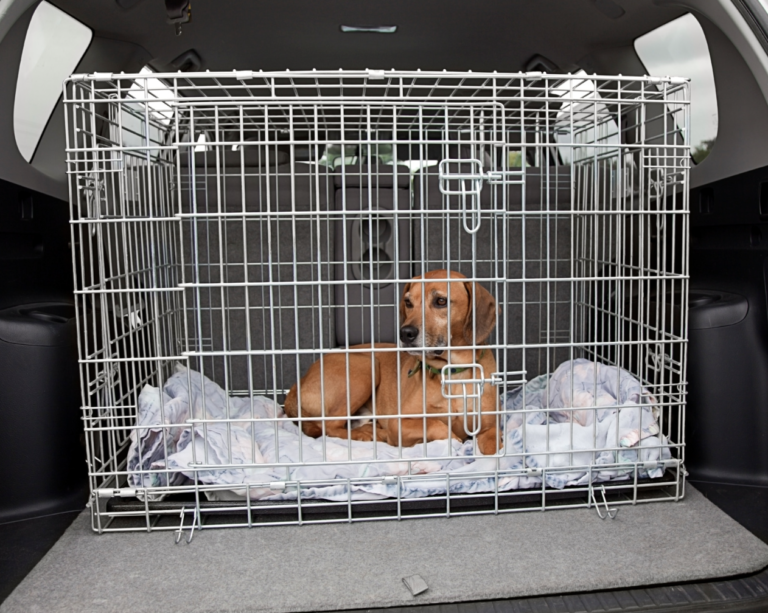
Some rescue transport services—like Embark Dogs—have regular adoption events around the country where they bring busloads of dogs to adoptive families waiting on their new best friends.
“It was really exciting! We found our dog online and applied through the rescue. Once we were approved as adopters, we got the details about the transport. The bus pulled up and the volunteers got out. All of the adopters gathered around and they started reading off the names of the dogs. We waited to hear our dog’s name and watched at least 50 other people pick up their new dogs—it was a ton of fun, and a really touching event. Plus, we brought home our new best friend!”
Sophia Henderson, Adopter from Embark Dogs
Sometimes, dogs being transported away from high-kill shelters aren’t lucky enough to go to a private rescue, foster, or adoptive home, but do get to go to no-kill shelters in states with more resources and fewer strays.
Rescue Dog Transport Non-Profits
There are dozens of volunteer rescue transport services around the country and thousands of amazing humans who give their time to this important cause. We’ve gathered a list of some of the best and most experienced non-profit animal transport companies here to highlight their amazing work and help you connect with rescuers looking for adopters and foster homes.
1. Amelia Air

Amelia Air is a volunteer-based animal transport organization that offers freedom flights for dogs at risk of euthanasia. The Amelia Air team is made up of a small group of volunteer pilots who save hundreds of dogs annually since 2019.
The name “Amelia Air” comes from a dog rescued by founder Dean Heistad. “Though Amelia the Great Dane was tragically neglected, she leapt into the cabin of the Heistad family’s Cessna when they came to rescue her! She loves to fly so much that they named her after another boundless aviator, Amelia Earhart,” says a tribute to the sweet Dane on her 8th birthday in August 2023.
2. Colorado Animal Rescue Express (CARE)
CARE was founded by two fabulous ladies who started volunteering together to drive dogs to Colorado from high-kill shelters in nearby—and sometimes far-off—states. After two years of driving together, Lisa Mendelsberg and Linda Fox founded CARE in 2007 and began recruiting others to drive dogs to freedom. CARE inspired dozens of other volunteer transport organizations, and eventually re-framed its mission. Today, CARE fundraises and pays for gas and other transport fees for thousands of animals and other transporters every year through Jake’s Fund.
As of 2016, all physical transporting duties once carried out by CARE are being done by Hope For Paws Colorado.
3. Doobert
Founded by animal lover and pilot Chris Roy, Doobert is an online rescue platform to connect overcrowded shelters with rescues willing to help and people eager to volunteer their time as transporters. Doobert is one of the easiest ways you can become an animal transporter and is a great place to connect with others in the world of animal rescue.
4. Embark Dogs

Embark Dogs is an all-in-one rescue and transport service that pulls dogs from high-kill shelters, rehabilitates them in short-term rescue facilities and foster homes, and transports dogs to new homes across the US. Embark Dogs schedules adoption day events at PetSmart stores throughout the country, then drives busloads of pups to their new families. To date, Embark has transported more than 5,000 dogs to their new homes and driven more than 290,000 miles.
5. Flying Fur Animal Rescue
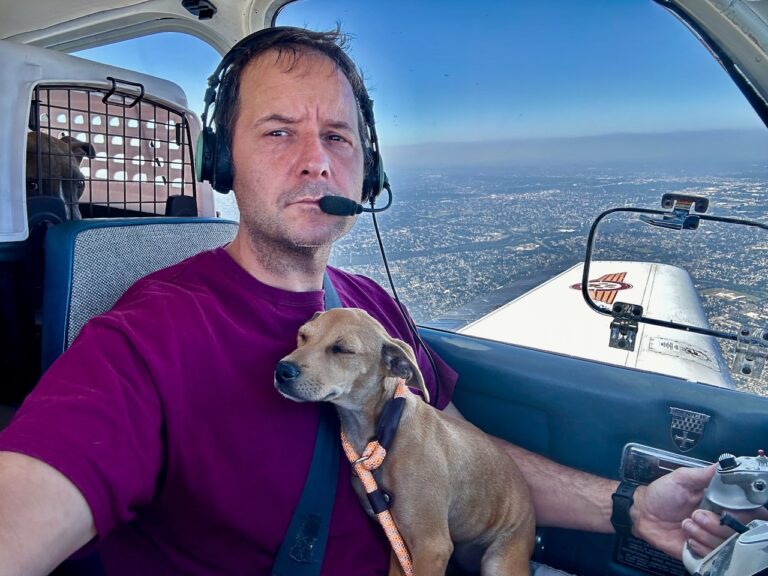
Source: @FlyingFurAnimalRescue — Flying Fur Animal Rescue founder Paul Steklenski transporting rescue dogs in Flying Fur One.
An amazing example of human generosity, Flying Fur Animal Rescue is a non-profit whose founder—Paul Steklenski—personally contributes at least $10,000 a year to save the lives of animals around the country, and volunteers to pilot flights. Based in Pennsylvania and operating along the East Coast, Flying Fur Animal Rescue offers aircraft transport for rescue animals when driving is less safe or too time-consuming.
6. Mobile Mutts
A relatively small Midwest-based animal transport and rescue, Mobile Mutts drives dogs from high-kill shelters in southern states to foster families in the Chicago suburbs, and eventually matches them with forever families.
7. Operation Roger
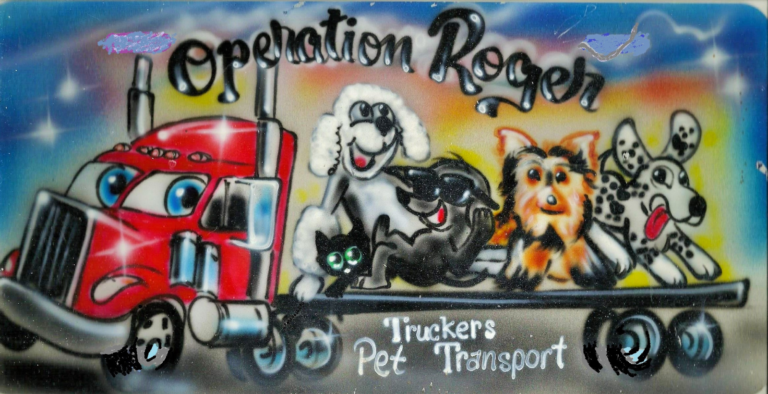
Operation Roger works as the “middleman” by transporting dogs from shelters to new homes and short-term fosters. The volunteer drivers working for Operation Roger are all truckers who regularly drive cross-country whether they are transporting animals or not. These truckers offer a space in their cab to bring a pup or two to freedom while giving them lots of love along the way.
8. Pet Rescue Pilots
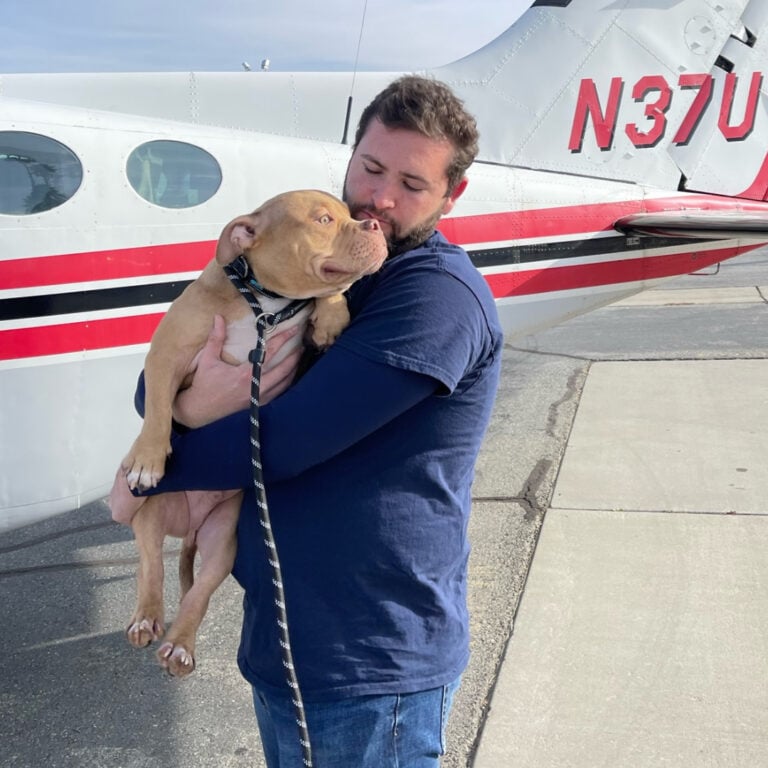
Source: @PetRescuePilots — Captain Julian Javor holding a sweet rescue Pittie before a transport flight.
Solely a transport service, Pet Rescue Pilots is a non-profit that offers flights for rescue dogs from high-kill shelters in California to various partner rescues and adoptive families on the West Coast of the US and Canada. A small team of five, Pet Rescue Pilots has still managed to rescue more than 2,500 pets!
9. Pilots N Paws
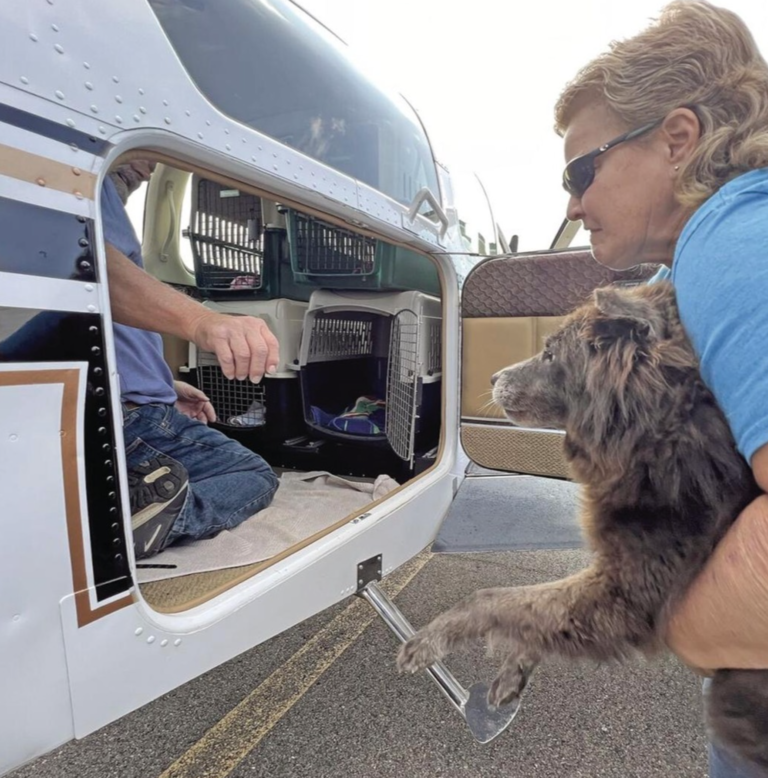
Pilots N Paws is a discussion board and organizational tool that connects rescuers and animal shelters with volunteer pilots willing to perform animal transports.
10. Project Freedom Ride
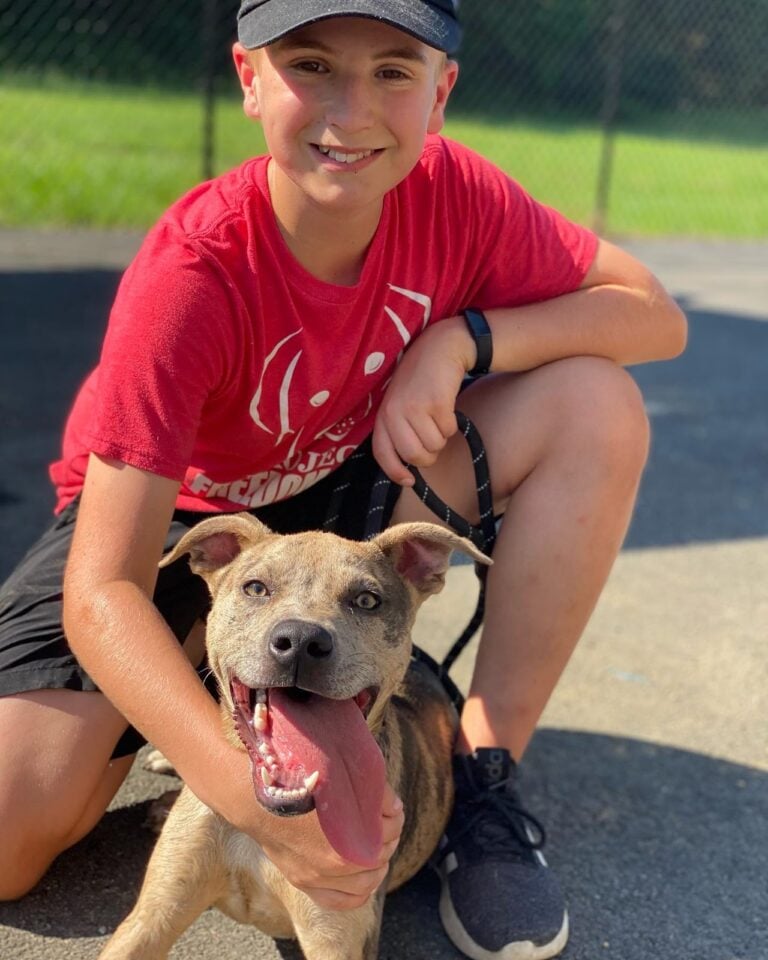
Project Freedom Ride is a 100% volunteer-based animal transport service that drives rescue dogs from Texas and Georgia shelters to foster homes, adoptive families, and no-kill shelters in the Northern U.S. and British Columbia. Founder Roman McConn came up with the idea for a rescue animal transport service when he was only five years old—seven years later, Project Freedom Ride has driven more than 4,800 dogs to safety!
11. Rescue Express
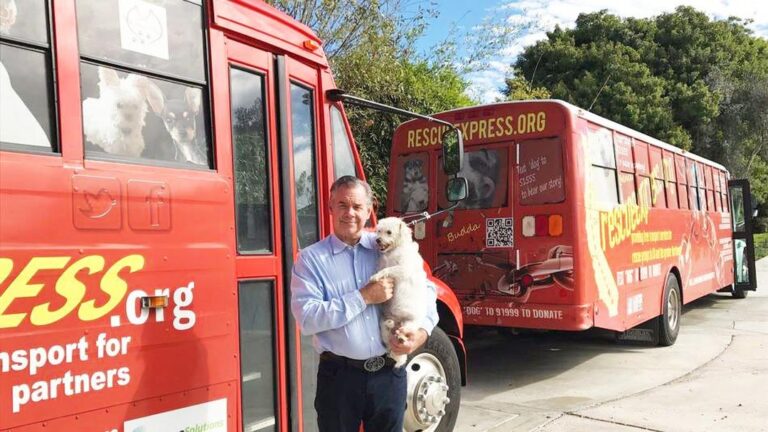
With more than 300 rescue partners across the U.S. and Canada, Rescue Express has transported more than 20,000 pets from overcrowded shelters in California to rescue groups in the Pacific Northwest and B.C. “Did you know that there is a shortage of adoptable pets in the northern United States and Canada?” says the Rescue Express mission statement. “We solve this problem by relocating at-risk animals from the southern states and delivering them to safety.”
12, Rescue Road Trips

Rescue Road Trips offers transport services for rescue dogs in the Deep South to homes in New England and beyond. In addition to transport services, Rescue Road Trips also operates a rescue in Ohio. Volunteers do weekly transport trips through Kentucky, Louisiana, Tennessee, Mississippi, and Texas, dropping the lucky pups off with rescues in Pennsylvania at the end of the week.
13. START Rescue

Shelter Transport Animal Rescue Team—or START Rescue—connects dogs at high risk of euthanasia in California with rescuers in the Pacific Northwest, then transports the dogs to safety. START transports dogs on “The Beast,” a 38-foot motorhome that has been retrofitted to fit up to 160 rescue animals safely and comfortably.
14. Wings of Rescue
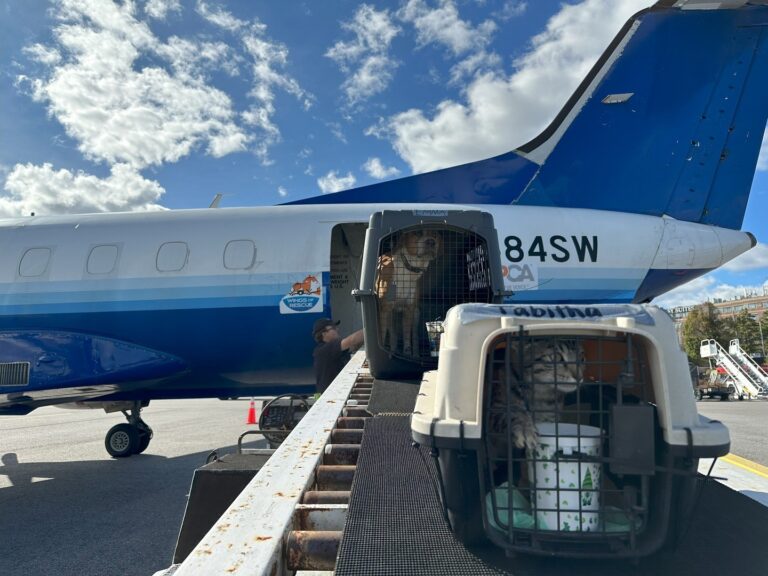
Wings of Rescue works with a network of rescues to organize safe homes and temporary housing for at-risk rescue dogs, then provides free flights to transport the dogs to freedom. Wings of Rescue owns two prop planes for transports, and also offers disaster relief for animals and their humans following catastrophic events like hurricanes, flooding, etc.
Related Articles:
- Stray Dogs Have Increased 30% In Last Two Years
- How To Find Animal Shelter Jobs Near Me: Volunteer + Paid
- Why Are There More Stray Dogs? The Real Reason Might Surprise You


